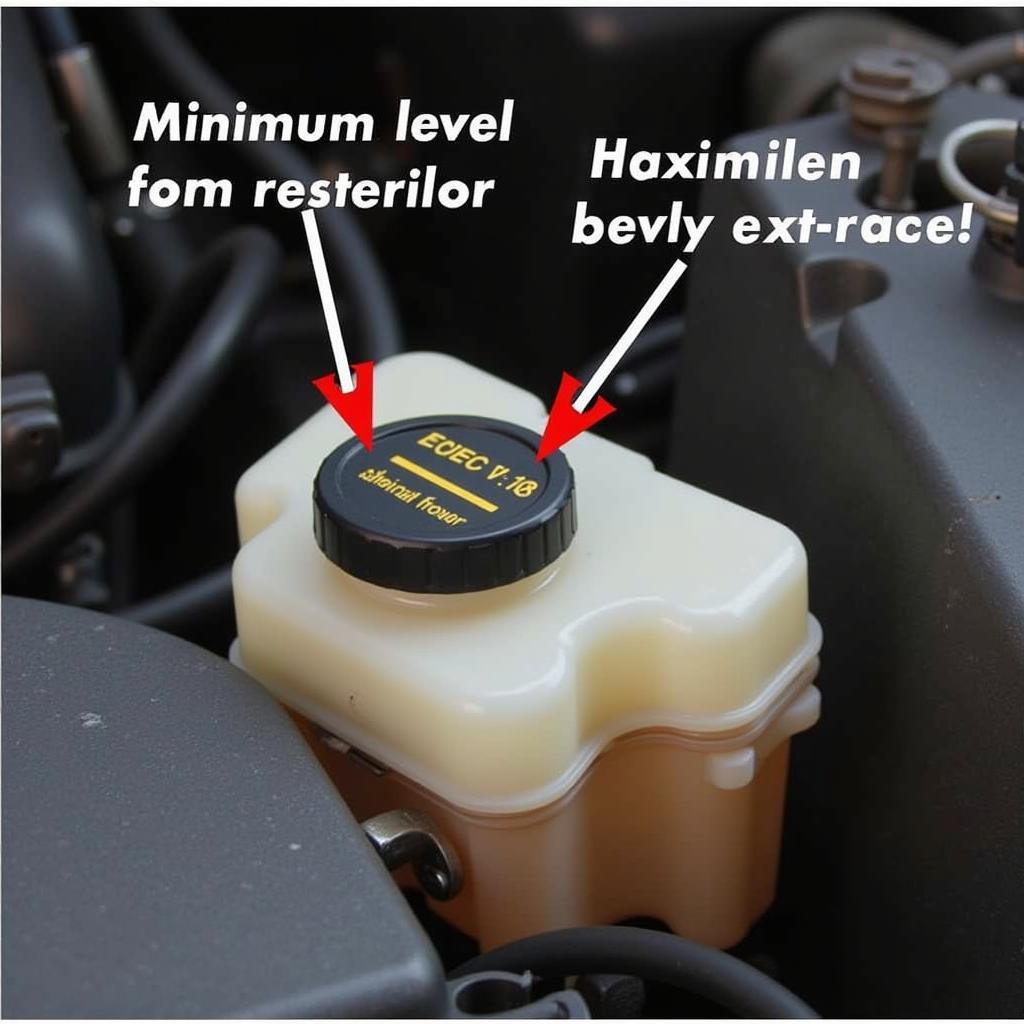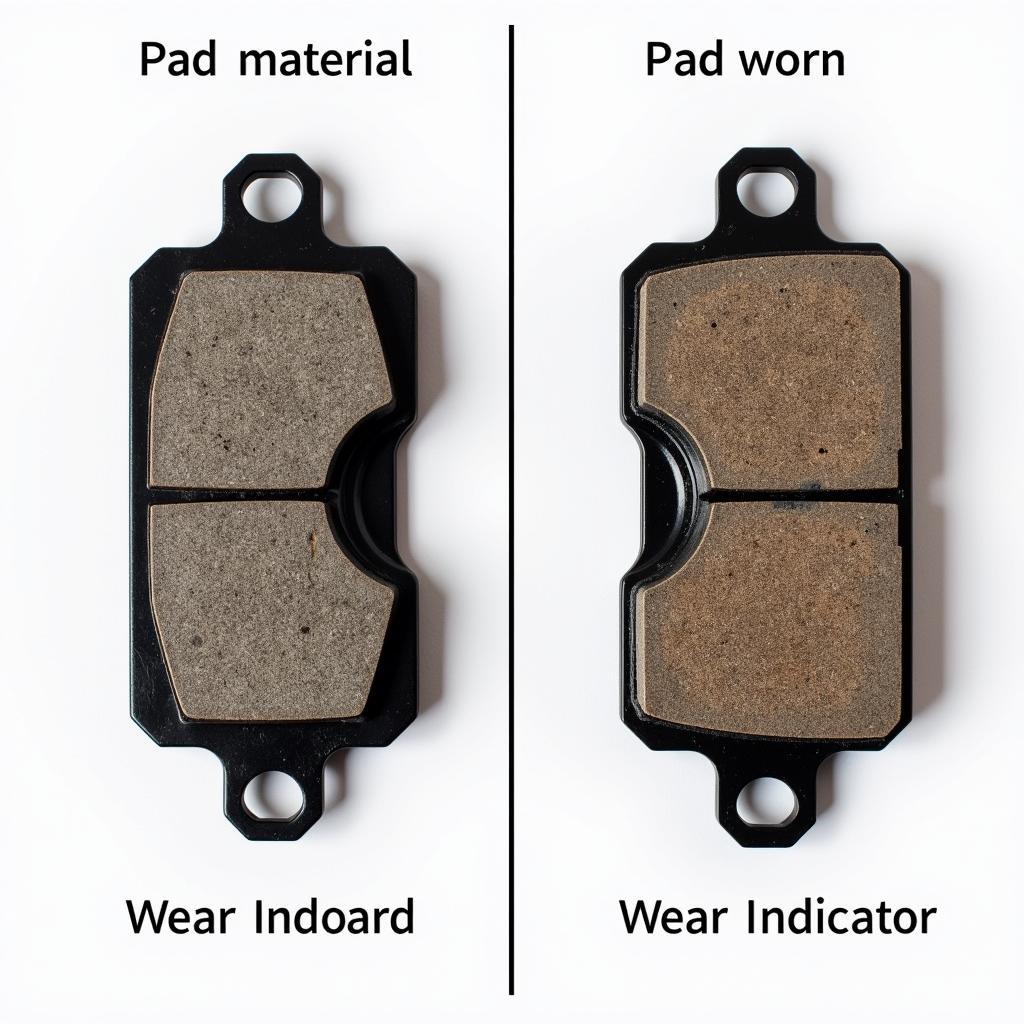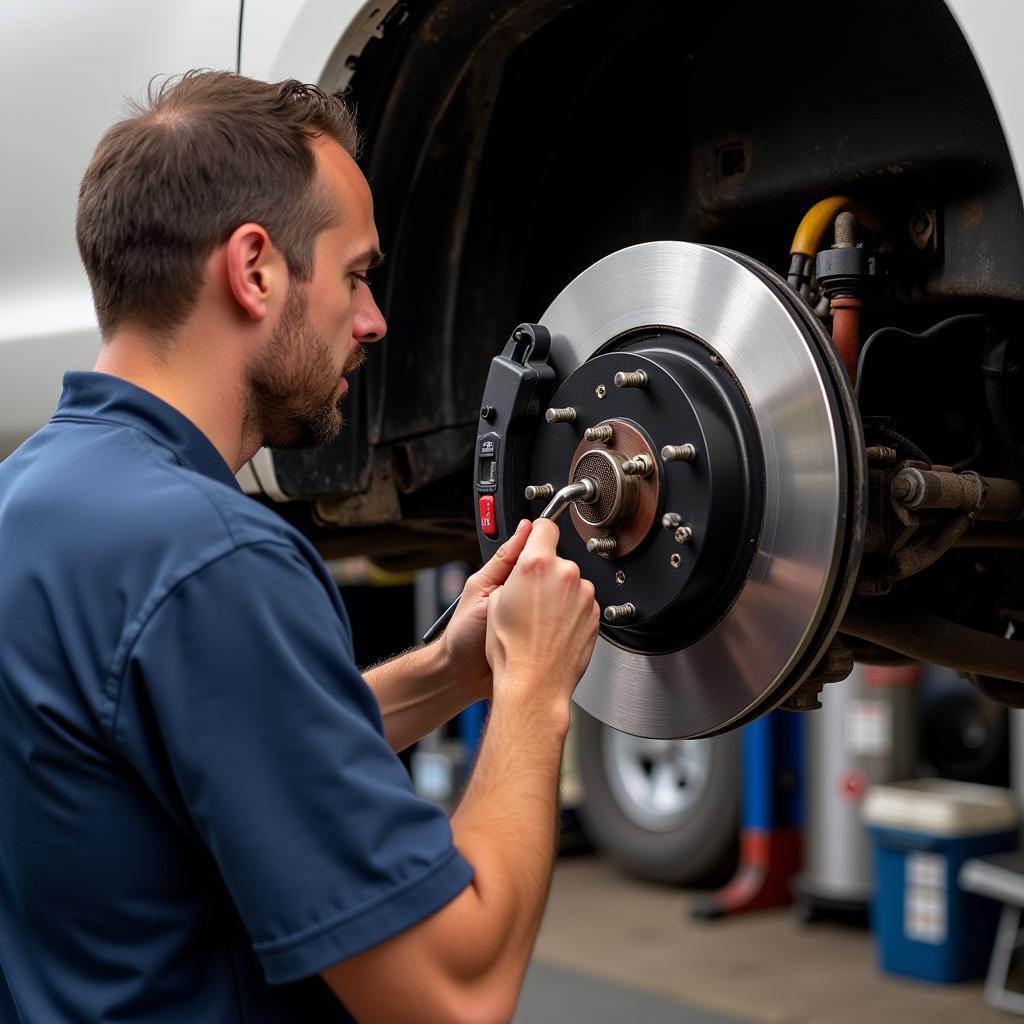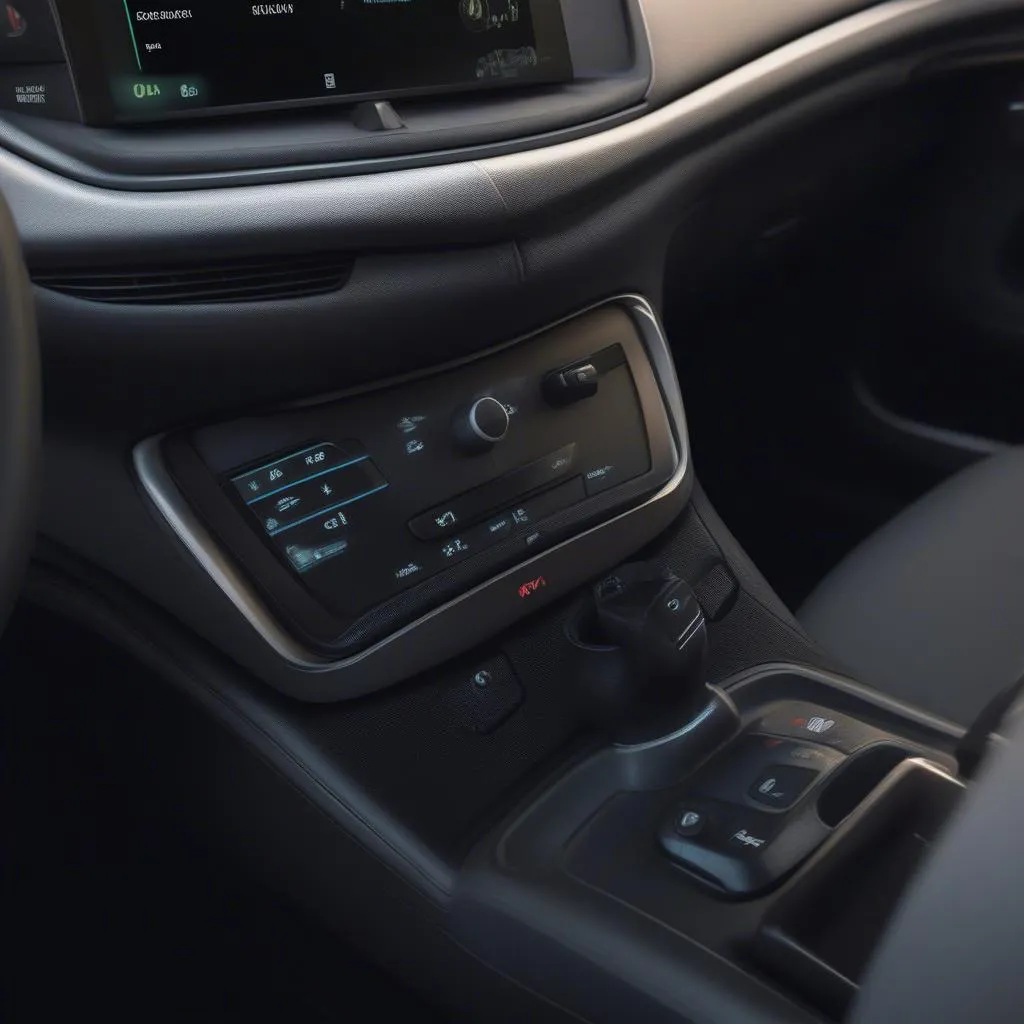The brake warning light on your dashboard is a crucial safety feature, and when it illuminates in your 2007 Toyota Sequoia, it’s crucial to address it promptly. This light indicates a potential issue within your braking system that requires immediate attention. While it could be as simple as a low brake fluid level, ignoring this warning could lead to costly repairs or, even worse, compromise your safety on the road.
This comprehensive guide will delve into the common causes behind a 2007 Toyota Sequoia brake warning light and provide a step-by-step troubleshooting approach to help you identify and potentially resolve the issue.
Understanding Your Sequoia’s Brake Warning System
Before we dive into the specifics of your 2007 Sequoia, it’s helpful to understand how the brake warning system generally works. Modern vehicles, including your Sequoia, are equipped with sensors that constantly monitor various components within the braking system. When one or more of these sensors detect an anomaly, it triggers the brake warning light on your dashboard.
Common Causes of a 2007 Toyota Sequoia Brake Warning Light
There are several reasons why your 2007 Toyota Sequoia’s brake warning light might be on. Here are some of the most common culprits:
1. Low Brake Fluid Level
One of the most frequent causes is a low brake fluid level. Brake fluid is the lifeblood of your braking system, transferring force from the brake pedal to the wheels. Over time, brake pads wear down, and this wear can lead to a lower brake fluid level.
Troubleshooting Tip:
Park your Sequoia on a level surface and visually inspect the brake fluid reservoir. It’s typically located near the firewall on the driver’s side and has a translucent container with minimum and maximum markings. If the fluid level is below the minimum mark, it’s time to add more brake fluid.
 Brake Fluid Reservoir
Brake Fluid Reservoir
2. Worn Brake Pads
As mentioned earlier, brake pads wear down over time due to friction. Worn brake pads not only reduce braking efficiency but can also trigger the warning light. Many modern vehicles, including some Sequoia models, have a dedicated brake pad wear sensor that illuminates the warning light when the pads reach a certain level of wear.
Troubleshooting Tip:
Inspect your brake pads by looking through the spaces between the wheel spokes. You should be able to see the brake pad sandwiched between the caliper and the rotor. If the pad material is less than 1/4 inch thick, it’s time for new brake pads.
 Worn Brake Pads
Worn Brake Pads
3. Faulty Brake Light Switch
The brake light switch is a small but vital component that activates your brake lights when you press the brake pedal. A malfunctioning brake light switch can sometimes trigger the brake warning light, especially if your brake lights aren’t working correctly.
4. ABS Issues
Your Toyota Sequoia is equipped with an Anti-lock Braking System (ABS), designed to prevent wheel lockup during hard braking. The ABS system has its own set of sensors and a control module. If any of these components malfunction, it can trigger the brake warning light.
Troubleshooting Tip:
If you suspect an ABS issue, it’s best to take your Sequoia to a qualified mechanic or dealership. Diagnosing and repairing ABS problems typically requires specialized diagnostic equipment.
5. Other Potential Causes
While the issues listed above are the most common, other less frequent culprits can trigger the brake warning light:
- Faulty wheel speed sensor: These sensors play a role in the ABS system and can also trigger the warning light if they malfunction.
- Issues with the brake caliper or brake lines: Leaks or damage to these components can also lead to brake problems.
- Electrical problems: Faulty wiring or a malfunctioning sensor can also be the underlying cause.
What to Do When Your Brake Warning Light Comes On
-
Don’t Panic: While a brake warning light is a serious matter, it’s essential to remain calm.
-
Assess the Situation: Are you experiencing any other symptoms, such as a soft brake pedal, grinding noises, or pulling to one side when braking?
-
Pull Over Safely: If possible, find a safe location to pull over and inspect your vehicle.
-
Check the Brake Fluid: As mentioned earlier, this is the first thing you should check.
-
Inspect Your Brake Lights: Make sure your brake lights are functioning correctly.
-
Seek Professional Help: If you can’t identify the issue or it’s beyond your comfort level to address, it’s crucial to seek professional help.
“When it comes to brakes, it’s always better to err on the side of caution,” advises John Miller, a seasoned automotive technician with over 20 years of experience. “Ignoring a brake warning light can lead to more extensive damage and potentially dangerous situations.”
Preventing Future Brake Problems
Regular vehicle maintenance is key to preventing brake problems. Here are some preventative measures:
- Regular Brake Inspections: Have your brakes inspected at least once a year or as recommended in your Sequoia’s owner’s manual.
- Timely Brake Pad Replacements: Don’t wait until your brake pads are completely worn down. Replace them as soon as they approach the minimum thickness level.
- Brake Fluid Flushes: Have your brake fluid flushed and replaced according to your Toyota’s maintenance schedule.
 Brake System Inspection
Brake System Inspection
Conclusion
Addressing a 2007 Toyota Sequoia brake warning light promptly is crucial for your safety and the longevity of your vehicle. By understanding the common causes and following the troubleshooting tips outlined in this guide, you can take the right steps to diagnose and address the issue. Remember, when in doubt, always consult with a qualified mechanic or your Toyota dealership. Regular maintenance and prompt attention to warning signs are the best ways to ensure your Sequoia’s braking system remains in top condition.

